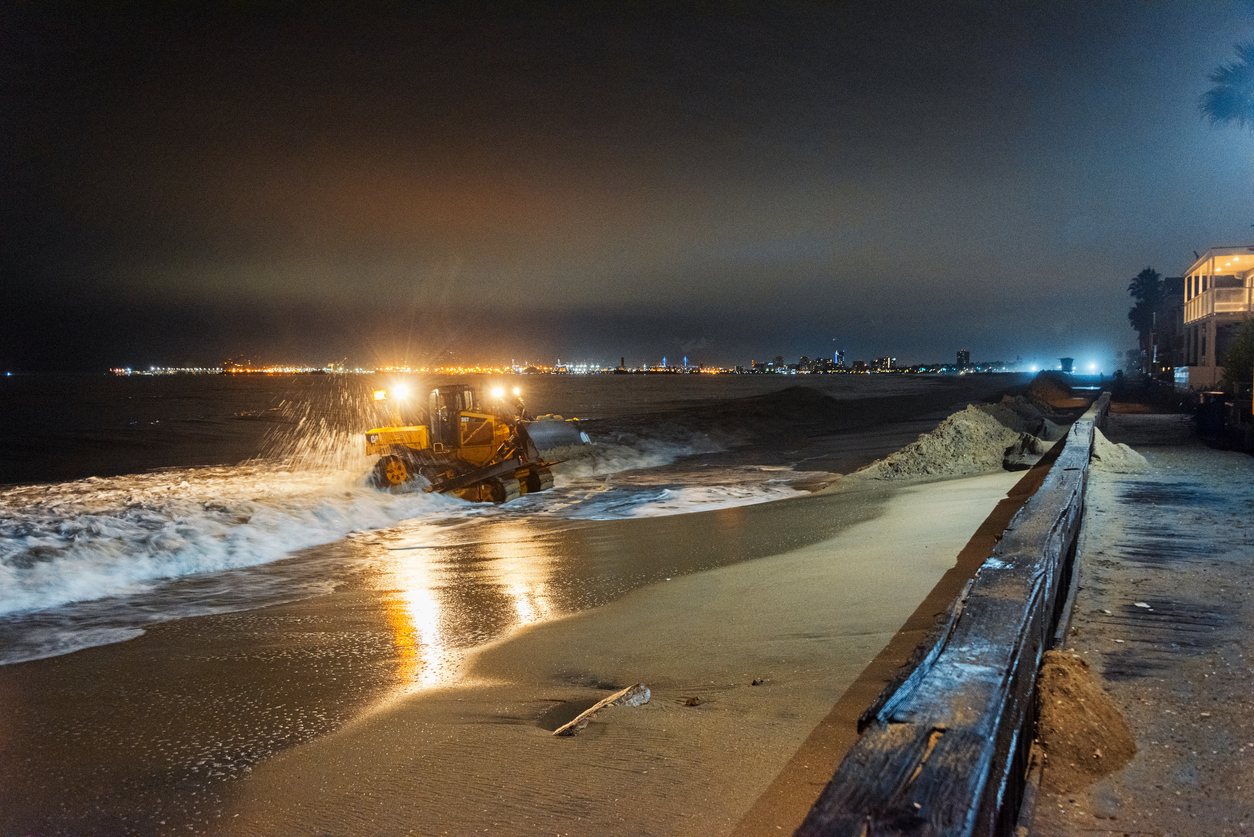Moody’s RMS®, the world’s leading catastrophe risk modeling and solutions firm, estimates total economic losses in the United States from the recent California flooding at $5-7 billion. This estimate accounts for inland flood impacts in the United States, as well as infrastructure damage. The insured losses are expected to range between $0.5 billion and $1.5 billion, including losses to the National Flood Insurance Program (NFIP) and the private flood market.
The overall economic loss estimate is based on an event reconstruction using the Moody’s RMS U.S. Inland Flood HD Model, and it accounts for property damage, contents damage, and business interruption across residential, commercial, industrial, automobile, and infrastructure assets.
Beginning on December 26, 2022, a series of extratropical cyclones impacted the West Coast of the United States, causing heavy rainfall, overtopped rivers, flash floods, levee breaches, mudslides, fallen trees, debris flow, and heavy snow at high altitudes, as well as some wind damage.
A band of high atmospheric water vapor, also known as a ‘atmospheric river,’ exacerbated the rainfall associated with these extratropical cyclones.
California’s rainfall intensity was so intense that several locations in central California set new three-week rainfall records, and some locations received their annual average rainfall totals in less than one month.
Water depths in the San Lorenzo River upstream of Santa Cruz rose by more than 16 feet (4.87 meters) in less than eight hours, resulting in widespread flash floods and river overtopping. This was the deepest water recorded in the San Lorenzo River since records began 85 years ago.
Infrastructure damage was extensive, which is factored into economic loss estimates. State highways and local roads took the brunt of the damage caused by flooding and mudslides. Trees that had previously been stressed by dry conditions were uprooted by high water velocities, saturated soils, and strong winds, causing damage to power grids as well as cars and property.
Continuous rainfall and the combined effects of riverine-groundwater-coastal interactions resulted in prolonged flooding for certain California urban coastal areas.
Furthermore, the ongoing drought that precedes these extratropical cyclone events adds another layer of complication for reservoir operators and residents. It is worth noting that 2022 was the second driest year in over 128 years for some areas (e.g., Santa Cruz) and was classified as ‘extreme drought’ by the National Integrated Drought Information System.
Despite significant increases in major reservoir and snowpack water levels, California is unlikely to be out of the drought, particularly when it comes to aquifer replenishment, given the previous three years of extreme drought and excessive groundwater withdrawals.
These storms produced high-intensity rainfall, with a large proportion of it falling into the ocean, whereas aquifers generally recharge gradually from less intense rainfall systems and snow melt.
“To put this event in historical perspective with the 1862 ARkStorm, although some impacted areas are similar, the ARkStorm produced much more severe precipitation, for example, 35 inches (88.9 centimeters) of precipitation in San Francisco compared to ~ 15 inches (38 centimeters) from this event. “The presence of flood defenses, which were mostly absent in 1862, is another important mitigating factor for this event,” said Mohsen Rahnama, Chief Risk Modeling Officer, Moody’s RMS.
Insurance is expected to cover only a small portion of the economic damage. The number of California households with flood insurance is less than 2%, a figure that has been steadily declining. There were only 193,281 residential National Flood Insurance Program (NFIP) policies in place as of August 2022, representing a 5% decrease from 2021.
Only homeowners with a government-backed loan who live in Special Flood Hazard Areas (SFHAs) are required to purchase flood insurance. However, these SFHA ‘flood zones’ do not always reflect current flood risk, are backward-looking, and are rarely revised.
Other factors influencing flood insurance take-up rates include, but are not limited to, affordability, the misconception that flood insurance is covered under a standard homeowners’ policy, and a lack of understanding of the associated costs incurred from flooding.
“Extreme drought leads to soil compaction, which means less infiltration and more runoff, resulting in less aquifer recharge and a higher risk of flooding,” Firas Saleh, Director, Product Management, Moody’s RMS, concluded. Today, nowhere in California is safe from flooding. If this extreme rainfall and subsequent damage have taught us anything, it’s that even perceived low-risk flood zones are still flood zones. It may overflow if it rains.”













